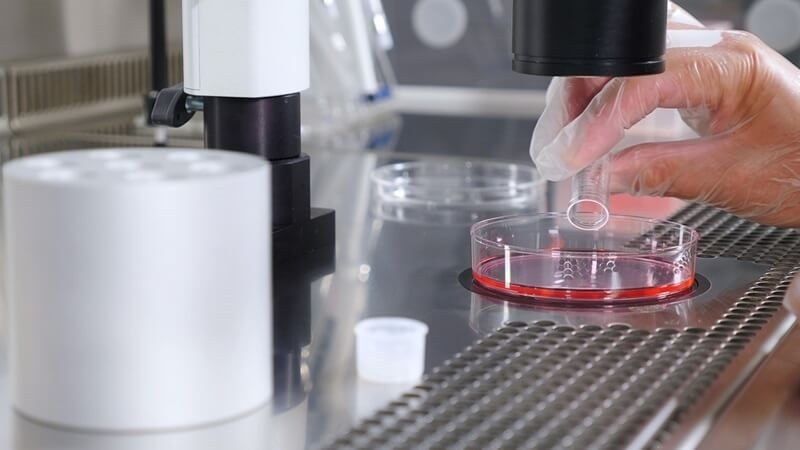
Having a family in the modern world is not an easy option. Most couples or individuals are faced with fertility challenges, making it hard to conceive. Fortunately, ART expands fertility selections, giving hope to those longing to have children. But what exactly is assisted reproductive technology? ART is an advanced medical method that is meant to help conception so that contemporary families can access innovative reproductive options.
The term Assisted Reproductive Technology goes beyond the limits of mere medical intervention—it is a source of hope for those facing fertility problems. Thanks to advances in medicine and science, ART has become a broad term encompassing numerous techniques, like in vitro fertilization (IVF), intrauterine insemination (IUI), and egg or sperm donation. All these forms of assisted reproductive technology address various causes of infertility, providing customized treatments according to individual requirements.
With increasing infertility levels all over the globe, ART has emerged as one of the primary tools in modern reproductive medicine. Childless couples can realize their dreams of parenthood without suffering biological constraints, thanks to these advanced medical techniques. ART has not ceased to push farther the reproductive envelope, be it for treating male or female infertility.
In this blog, I'm exploring ART's significance, success rate, and recent developments. Are you planning on seeing a fertility specialist? Would you like to know more about ART? Are you ready to step into the revolutionary world of assisted reproductive technology? Read on!
Assisted reproductive technology is those medical methods that aim at curing infertility. They widen the opportunities for those individuals and couples who cannot conceive naturally. In short, the ART method aims to treat various disorders, and the treatment is uniquely designed for each patient according to various particular needs.

According to ART, the manipulation of sperm and eggs to achieve fertilization is defined as ART. This may occur either within the body (in vivo) or outside the body (in vitro). The common goal is to widen the opportunity for successful conception and pregnancy, especially for those who are unable to conceive naturally.
You May Read Environmental Factors That Affect Fertility: What to Avoid
Infertility is an increasingly global issue, and about 15% of couples in the reproductive age group suffer from it. The etiology of infertility varies from hormonal dysfunctions and anatomical abnormalities to genetic and environmental factors. Both males and females can have infertility, and in most cases, the etiology is unclear.
The psychological burden of infertility is often significant, causing stress, anxiety, and feelings of loss. For most, not being able to have a child naturally feels like a monumental obstacle to reaching their ultimate goal of having a family. Here, assisted reproductive technology comes in, providing a ray of hope and a road to parenthood.
There are various forms of assisted reproductive technology, each intended to treat a particular fertility issue. Some of the most prevalent ART procedures include:
Assisted reproductive technology is very miraculous for people with infertility, but its own emotional and moral undertones are invariably attached to it. The experience of ART may be emotionally draining, with cycles of encouragement and disappointment that are required to have the social support system available, consisting of counseling and psychological help.
Challenging ethical issues are being raised at the levels of ART regarding the rights and responsibilities of all the parties involved, including donor parents, surrogate mothers, and children conceived through these technologies—concerns about multiple births equal controversies regarding genetic privacy and the commodification of reproductive material.
With the progress in technology comes the development of assisted reproductive technology. Developments such as AI, genetic screening, and better cryopreservation allow for fertility treatments that are efficient and more personalized.
One exciting area of research involves creating in vitro gametogenesis (IVG), which produces eggs and sperm from stem cells. Should it succeed, IVG could revolutionize ART by providing a virtually endless supply of gametes, thus allowing people who don't possess functional eggs or sperm actually to have genetically related children.
CRISPR and other tools for genome editing are now being investigated to cut out the genetic mutations responsible for infertility or inherited disease. They are still experimental, but theoretically, these tools might not only one day help solve infertility but also eliminate the risk of passing on genetic diseases to offspring.
Suggested Read: Learn IUI Success Rates, Key Factors, and PCOS Pregnancy Tips
Assisted reproductive technology: the solutions for contemporary families seeking to resolve fertility will completely change the lives of couples confronted with the inability to become parents. After progress in medical science, assisted reproductive technology can offer some solutions that meet the requirements of individuals and couples. To make an informed decision about fertility, it will undoubtedly help a couple to know the exact meaning of assisted reproductive technology and acquaint themselves with the various assisted reproductive technologies.
From IVF to ICSI and surrogacy, these modern techniques open doors for the childless, with new opportunities for people who have infertility. Even though challenges do prevail, consistent research and growing technological improvements already promise much higher success rates and broader access to assisted reproductive technology, from a mere medical miracle to a harbinger of hope for families worldwide.
As this burst of enthusiasm is welcomed by many in the world, education and awareness about assisted reproductive technology will play a central role in normalizing fertility treatments. Be it as candidates for options or couples accompanying them, knowledge of these almighty procedures will ensure that everyone enjoys parenthood.
This content was created by AI